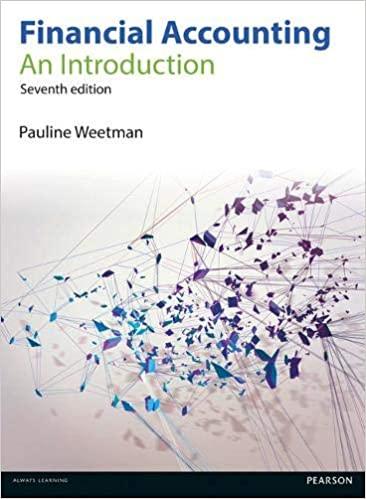Question
It is February 15, 2021, and you are working as the senior auditor for the Harper, Sanders & Bentley CPA firm on the December 31,
It is February 15, 2021, and you are working as the senior auditor for the Harper, Sanders & Bentley CPA firm on the December 31, 2020, year-end financial statement audit of Acme Manufacturing Company (AMC). This is the first year your firm has audited AMC. In prior years, the companys financial records were audited by another CPA firm. AMC is a publicly traded company that manufactures large electric motors. Currently, you are auditing the balance in AMCs plant assets, which represents more than 60% of the value of AMCs total assets. You are an experienced auditor, but this is the first time youve audited a major manufacturing company (i.e., most of your prior audit clients have been service firms).
You notice that AMCs total net book value of plant assets at December 31, 2020, is $600 million, with $570 million of this amount classified as noncurrent assets and $30 million classified as current assets. The $30 million of plant assets classified as current comprises half of AMCs total current assets of $60 million. You ask AMCs controller, Riley Sharp, why the company classifies part of its plant assets as current and part as noncurrent. Riley notes that separating plant assets between current and noncurrent might be a little unusual but is well within the requirements of GAAP.
For example, Riley states that GAAP defines current assets as those that will be converted into cash or consumed (i.e., used up) within one year or the operating cycle, whichever is longer. AMCs operating cycle is one year. Each year, AMC reclassifies from a noncurrent to a current status the amount of plant assets equal to the upcoming years estimated depreciation on the plant assets. Riley notes that the next years estimated depreciation on the plant assets represents that portion of the plant assets that will be used up (i.e., expensed) in the next 12 months. Since this amount will be expensed (i.e., consumed) in the next year, it is reclassified from a noncurrent to a current status at the end of the present year. AMC depreciates its plant assets using the straight-line method over a 20-year life with no salvage value. The $30 million of plant assets classified as current at December 31, 2020, represents one-twentieth of the total net book value of the $600 million of plant assets existing at that date. Riley notes that this is the same concept as classifying inventory as a current asset. That is, inventory is classified as a current asset because it is expected to be used up (i.e., consumed) during the next year either in the manufacturing process or when the finished goods are sold. Thus, inventory is expected to be expensed during the upcoming year just as a portion of plant assets will be expensed in the next year.
Furthermore, Riley states that reclassifying to current that portion of plant assets that will be expensed (i.e., consumed) through depreciation during the upcoming year is very similar to reclassifying to current that portion of long-term debt that will be paid off in the next year. Riley notes that GAAP clearly requires a company to reclassify as current any portion of its noncurrent debt that will be paid within the next year or operating cycle, whichever is longer. Thus, she points out that it is logical to reclassify a portion of plant assets to current using a manner similar to that required for long-term liabilities because this results in consistent and comparable reporting of assets and liabilities in the balance sheet. Finally, Riley notes that AMC has used this procedure for many years, and the prior auditors never questioned it.
You have little experience with accounting for plant assets, and Rileys logic seems sound. However, as the auditor, it is ultimately your decision concerning whether AMCs method of accounting for plant assets is appropriate. You should identify any relevant issue(s) in this case and provide your decision(s) on them. Include references to the appropriate authoritative sources used in making your decision(s).
Step by Step Solution
There are 3 Steps involved in it
Step: 1

Get Instant Access to Expert-Tailored Solutions
See step-by-step solutions with expert insights and AI powered tools for academic success
Step: 2

Step: 3

Ace Your Homework with AI
Get the answers you need in no time with our AI-driven, step-by-step assistance
Get Started


